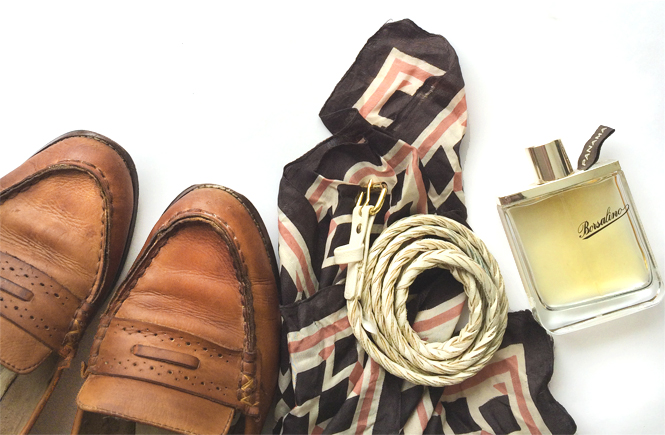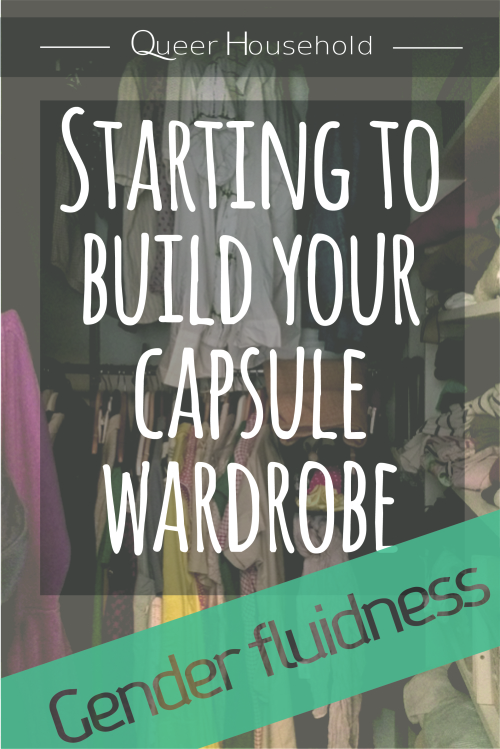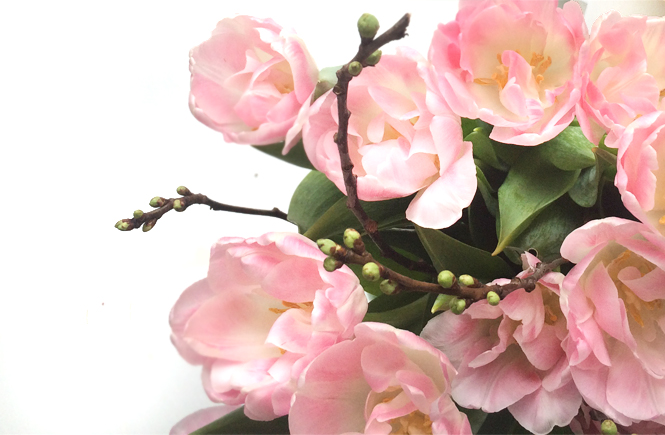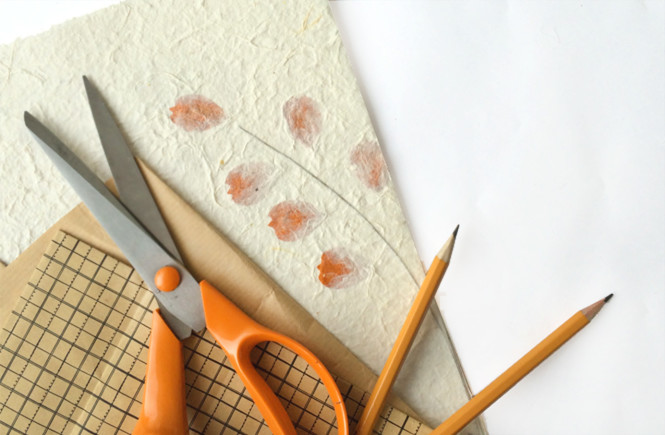Both, me and Janina, are somewhat fluid with our gender identities. That takes the wardrobe problems to a whole new level. The same way as gender isn’t black and white the wardrobe problems can appear in a whole spectrum. For Janina the challenge is juggling with feminine and masculine days.
As I wrote lately, I started to really work with my wardrobe during last year when I finally cracked the reason for my blue feelings with the help of the infamous apple dress. With Janina’s wardrobe we are really just starting to figure it out.
As we are both clothing designers, we think of capsule wardrobe as a good clothing collection. With commercial brands the collections are often by default either for men or women, but that’s really narrow way to look at clothes and doesn’t work for everyone. I wrote a whole thesis why and how it doesn’t work!
“I just want to be seen as a guy who has nice dresses.”
Janina’s wardrobe has a lot of clothes that don’t necessarily work together and she doesn’t really feel good in most of the clothes. Because of the ED and the depression the fit of many clothes is not right any more. That and anxiety about trying clothes on in the stores had made the task of fixing the wardrobe feel quite awful. It has been easier and less painful to just let it be.
The old wardrobe included several skirts in the colours Janina doesn’t like very much, khakis that didn’t fit anymore, old ratty shirts and blouses, few thread bare vintage pieces from 60’s and 70’s, last summer’s two flower patterned tops which shrank in the laundry… It was a colourful circus with pieces that didn’t play together most of the times.
It’s great thing that we actually had the energy to turn the closet over. That produced two bags to get rid off. We will offer one of them to the theater and the other goes to recycle bin in the nearest H&M store. More good ways to get rid of stuff can be found on the post here.
Let’s not double that closet
When gender is fluid the first idea is to assemble your wardrobe twice, one for masculine days and one for feminine days. Alas, it’s most often not that simple as few of us have either space or money to invest for twice as big wardrobe. Also, the gender identity may not be that black and white. It might be the men’s sweatpants plus big scarf artfully draped over the shoulders that makes the home look. (I’m looking at Janina right as I write this. What can I say, I love my spouse.)
There’s no need for two but one well-organized and thought wardrobe. It’s more economic to try to find at least some pieces which work well whenever and with any kind of days. We know that it’s easier said than done as many clothes are made to present narrow image of either men or women. Following up there are some tips on how to shop gender neutrally.
See the differences
Most of the times men’s clothes are more modest than women’s. The necks show decolté less and t-shirt sleeves are often bit longer, when in women’s fashion necks tend to scoop wider and lower.
Patterns used in men’s clothes are usually smaller (stripes, plaid, dots and paisley) and often woven into the fabric. Colours are earthy or more aggressive with strong contrasts. In women’s fashion there’s often printed patterns which use colours or bigger shapes to stand out more. Also trend colours change quicker in women’s fashion.
If you try on a women’s t-shirt and then same kind of basic tee from men’s section you can feel the difference in fabric even thought both of them are most likely made with cotton and elastan blend. Fabrics for women’s fashion are usually thinner. Cascading is the adjective often used.
Even thought men’s fabrics are sturdier they feel softer, because manufacturer’s think comfort is imperative in men’s clothes. Personally I don’t understand why big manufacturer’s overlook that more easily with women’s clothes.
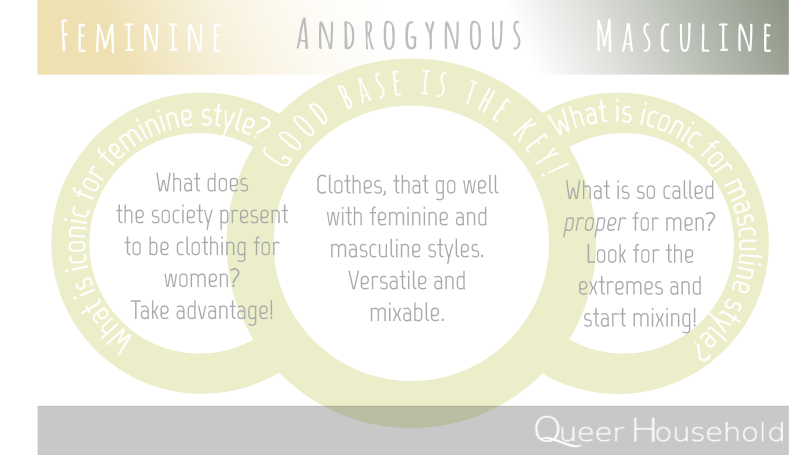
Work around the characteristics
Try plain and neutral colours which are used with all genders.
Again white, black, grey, tones from brown to soft nudes, strong red and blues from navy to pale sky blue have been used long time in fashion and with every gender.
Gender is in the details.
The details make often the last difference between “boys’ and girls’ clothes”. Collars, cuffs, buttons, hemming etc. Keep eye on them.
Simple is often the best.
This is really what the first two points are about, when you simplify, there’s more changes that the look will work with any gender. You can try to find more minimalistic pieces to decrease the gender tied visuals.
Search the extremes
Try the most feminine men’s clothes and most masculine women’s clothes you can find. Mix them with joy. On the other end of the spectrum, find the pieces of clothing that make the ultimate feminine or masculine look for you. Identify the iconic pieces which make the looks. For Janina the most feminine piece she has is the baby pink flared skirt and the most masculine straight slacks. Still a basic, not gendered white turtle-neck shirt goes well with both of them.
Don’t forget that the accessories can turn the look upside down.
Suit up and then crab your purse, the look is different. Think how you tie your scarf, or do you use lipstick, what kind of hats tip the look towards masculine, how about feminine?
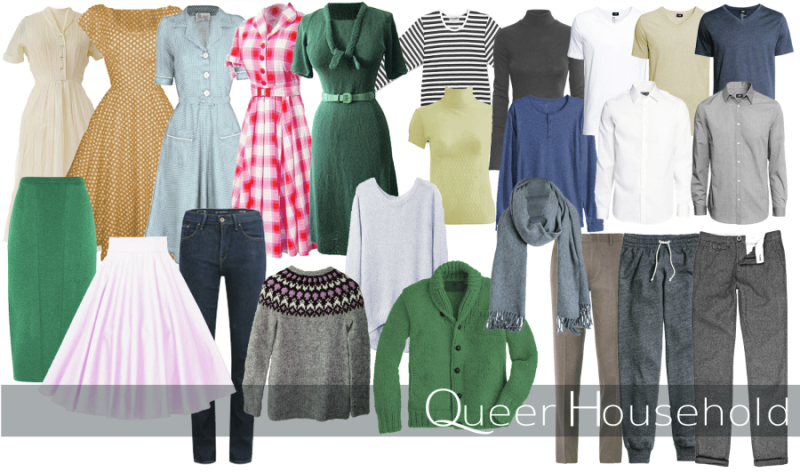
Vintage and versatile
Janina’s wardrobe is styled mostly along mid-century’s lines with soft blouses, wide skirts, twinsets, turtle necks and trouser legs which taper down toward ankles. She really loves her vintage pieces and old fashion can be surprisingly versatile.
The waist of the men’s trousers tended to start higher before and after the IIWW so those vintage or vintage inspired pieces juggle nicely in between the masculine and feminine in 21st century eyes. Also the cut of the men’s vests before the IIWW was slim and close-fitting, tight fit kept the shirt and suspenders from moving around. Men actually had waist then.
I love fashion history and it’s fun to search looks and silhouettes from the past days. Many of those looks give lots of ideas when it comes to dressing according your gender. As social gender is and have been bunch of norms and ways, it has also changed during the years. What was considered feminine or masculine in the past can be something different now.
We know, that finding good clothes can be taunting task and take time and money but it’ll be paid back. I would like remind that everyone is entitled to dress according to their gender and the feeling one gets when the clothes are right is wondrous. Take a look inside your closet and dedicate 20 minutes for thinking which clothes you like. It’s the best feeling when we are proud to be just who we are.
Virtual hugs for you!
What do you find to be the most feminine clothes? How about masculine? How would you blend the lines and make the pieces work for different purposes?
Cheers,
Iida

